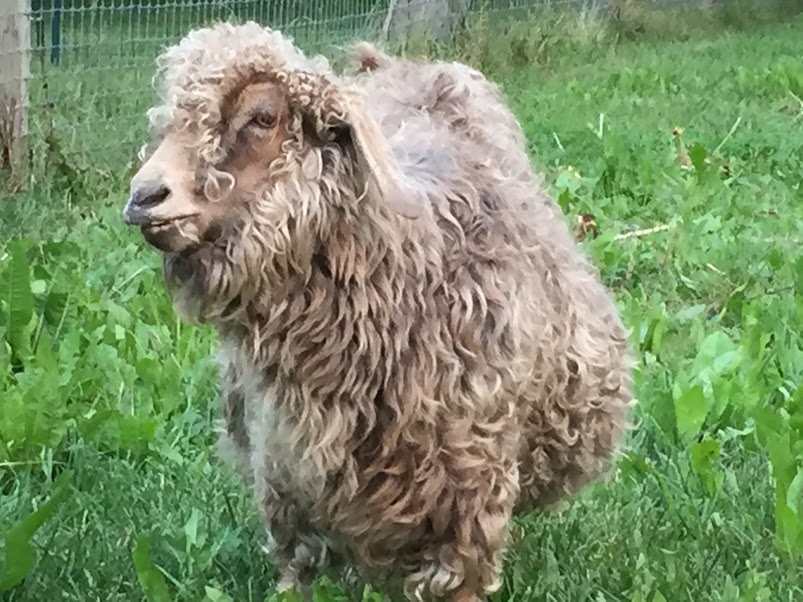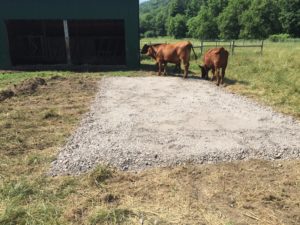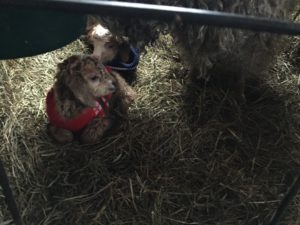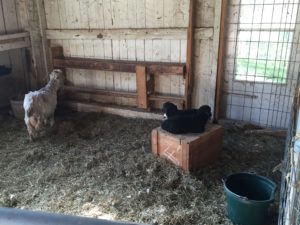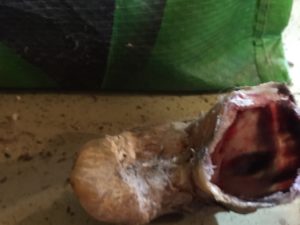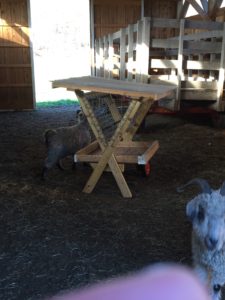We built a moveable goat hay feeder a number of years ago (details here). After the first winter, we made a few tweaks (details here). As discussed at the end of Part 2, we did drill some holes into the tray but those holes clogged up periodically so it turned out faster and easier to just scoop out any resulting hay dust from the tray instead.
The original couple of posts continue to be very popular with search engine results (relatively speaking) and we have received a number of inquiries about the plans to make one.
We didn’t really have a specific size plan or design in mind when creating it. The general idea was to replicate something like this one from Tractor Supply or many other samples from other sites.
Most of the design decisions were based on the sizes and types of available materials we had on hand (mostly items just stored in the hayloft). The key component was the metal shelf that we bent into a v-shape. That serves as the main piece of the feeder and basically dictated the width.

The metal shelf was ~32″ deep so that became the width of the feeder area. The roof is 36″ because we happened to have a piece of plastic roofing that was ~18″ wide so we cut it in half to get 2 sections of 18″.

The roof is 4 feet because we had an 8 foot long section that we cut in half. The tray ended up as 32″ because we wanted a couple extra inches past the edge of the feeder to catch falling hay.
Continue reading


